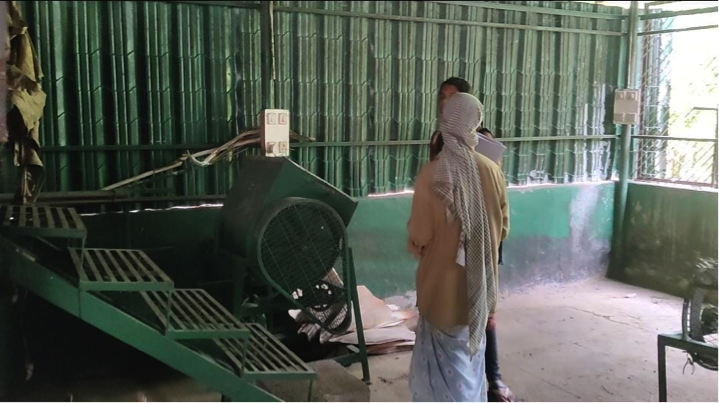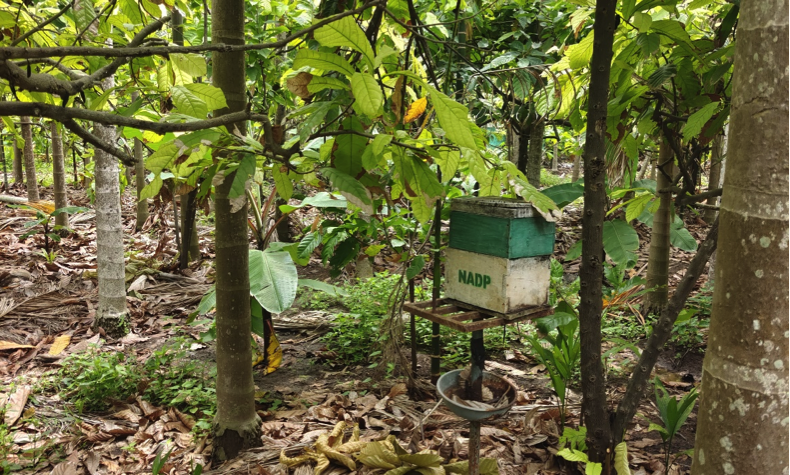Farmer Innovation
| |
|
ORGANIC FARMING
On an expansive 8.5-acre organic farm, the farmer has adhered to a strict no-fertilizer policy for the past 12 years, showcasing the viability of sustainable agricultural practices. The primary crop of this farm is arecanut, a highly valued crop in India, known for its use in various traditional and commercial applications. By relying solely on natural farming techniques, the farmer has managed to maintain healthy crop yields, demonstrating the resilience of organic methods even without synthetic inputs.
The farm doesn’t just thrive on arecanut alone. It is a vibrant, diverse ecosystem, with numerous intercrops complementing the main crop, carefully cultivated across different sections of the farm. Cocoa, nutmeg, wood apple, avocado, pepper, orange, and pomegranate grow alongside the arecanut, each adding to the biodiversity of the land. These intercrops serve multiple purposes, from providing shade and improving soil quality to creating additional sources of income and enhancing the farm's resilience against environmental stresses. For instance, cocoa is an excellent companion to arecanut, benefiting from the shade provided by the taller areca trees, while nutmeg and pepper are strategically planted to maximize the use of vertical space, making the most of the farm’s acreage.
ARECANUT DEHUSKING MACHINE:
The process of dehusking arecanut is traditionally labor-intensive and time-consuming. When done manually, one laborer can only dehusk about 15 kg of nuts in an 8-hour workday, which significantly limits productivity. However, with the introduction of the arecanut dehusking machine, this challenging task has become much more efficient. The machine has the capability to process 40 to 42 kg of arecanut nuts per hour, a dramatic improvement over manual labor. On average, the machine can process up to 300 kg of arecanut nuts in a single day, which represents a significant improvement over manual methods.
The use of the dehusking machine has proven to be a game-changer for farmers, particularly in terms of profitability. By reducing labor dependency and improving efficiency, the machine can increase a farmer's profit margins by 10-15%. This improvement in profitability is not only due to the increased output but also because of the reduction in the labor costs associated with manual dehusking. With faster processing times, farmers can quickly scale up their production to meet demand, allowing them to optimize both time and resources.
In addition to the dehusking machine, the farm also utilizes an arecanut husk shredding machine. This machine shreds the husks into smaller pieces, which are then used as mulch on the farm. Mulching with shredded husks helps in moisture retention, weed suppression, and maintaining soil health, further enhancing the sustainability of the farm’s operations. The use of mulched husks also ensures that there is minimal waste, as the by-products of dehusking are efficiently repurposed to benefit the farm ecosystem.
|
 |
|
Jeevamrutham preparing machine:
The preparation of Jeevamrutham, a traditional organic fertilizer, is a labor-intensive process, especially when done manually. The key ingredients in Jeevamrutham include 10 kg of cow dung, 10 litres of cow urine, 2 kg of jaggery, 2 kg of pulse flour, and a small amount of soil. To simplify the preparation and improve efficiency, the farmer developed a specialized Jeevamrutham preparation machine. This machine consists of three main components: a mixing tank, a digester unit, and a filter tank.
In the mixing tank, all the raw materials are fed together. The mixing blade inside the tank is made of wood, as this material is believed to promote greater bacterial growth, which is crucial for the effectiveness of Jeevamrutham as a bio fertilizer. Once the ingredients are thoroughly mixed, the mixture is transferred to the digester tank. The digester tank is designed with dimensions of 16 inches in length, 6 inches in breadth, and 4 inches in width, and features a 16-inch iron rod at the centre for thorough mixing. The tank has a capacity of 4,000 litres, allowing the farmer to process large quantities of Jeevamrutham efficiently. A mixture of 400 litres of the prepared Jeevamrutham is combined with 4,000 litres of water and left for an incubation period, during which microbial activity is encouraged to enrich the solution.
After incubation, the mixture is passed through a filtering unit. A disc filter, capable of filtering up to 35 microns, ensures that the final product is free of large particles and impurities. This filtered Jeevamrutham is then ready for application to crops through sprinkler or drip irrigation systems, making it easy to distribute evenly across the fields. By automating the preparation process, the farmer has not only reduced the physical effort involved but also ensured consistency and quality in the Jeevamrutham, benefiting both soil health and crop productivity.
|
 |
COCOA POD REMOVER:
Removing cocoa pods manually is a difficult and time-consuming process, with one laborer able to handle only 500-600 pods in an entire day. This slow method limits productivity and increases labor costs for farmers. However, the introduction of a cocoa pod removal machine has revolutionized this task. With the machine, 600-800 pods can be removed in just one hour, representing a significant increase in efficiency. Only 10-20% of the process still requires manual labor, which greatly reduces the need for human workers and cuts down on associated costs.
The machine not only saves time but also reduces the physical strain on workers, allowing for a more streamlined and cost-effective process. By minimizing manual effort and increasing the speed of pod removal, it has a direct impact on farm profitability.
Source Information:
N.R Nadarajan
Chithirachavadi,
Thondamuthur
Coimbatore - District.
Mobile :9361532833
Student Information:
N NARMADHA
MSc (Ag.) Agricultural Extension Education
narmadhanagaraj01@gmail.com
|


